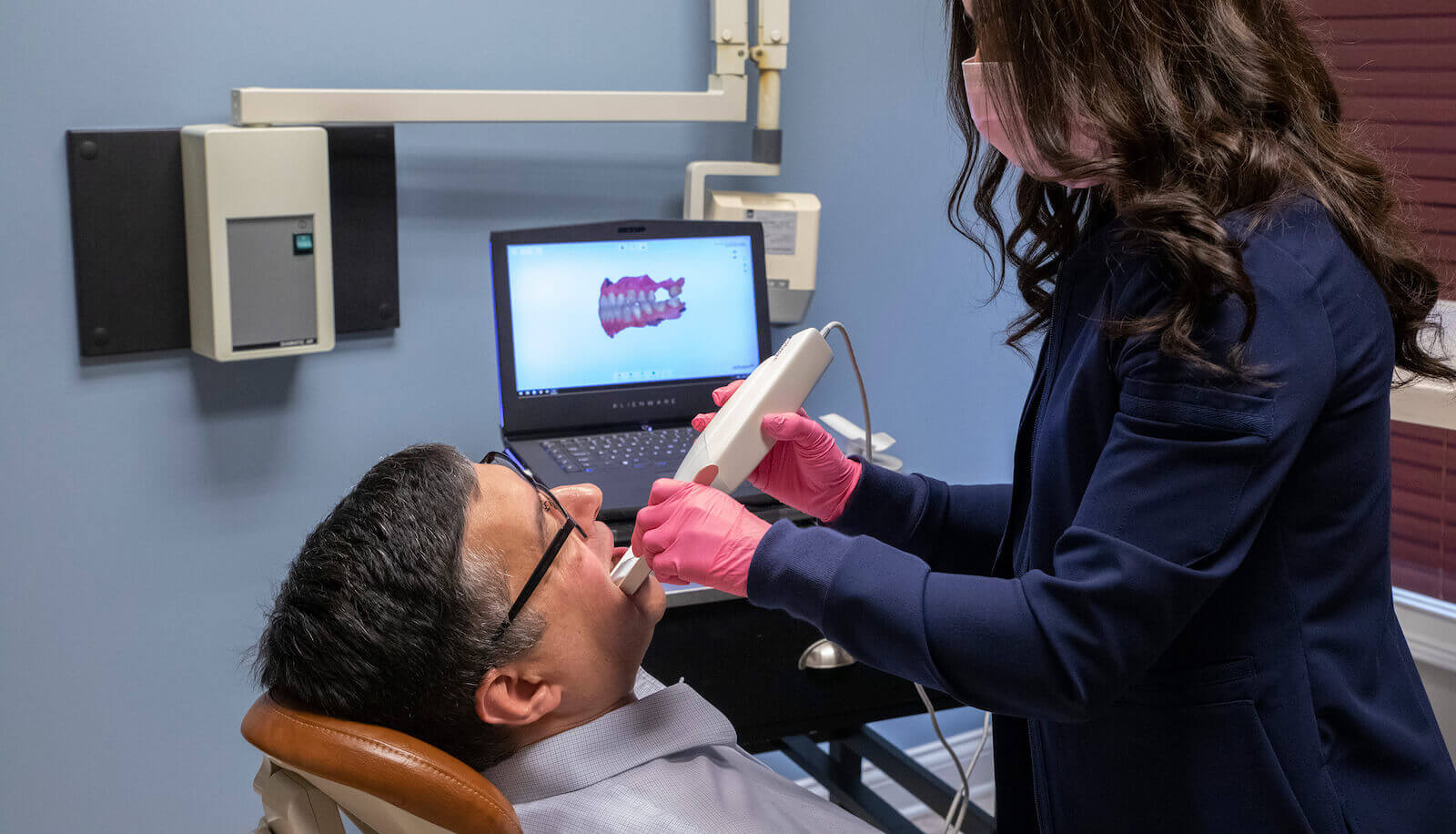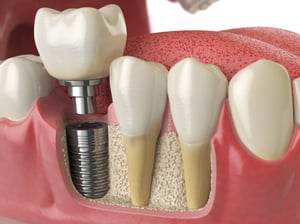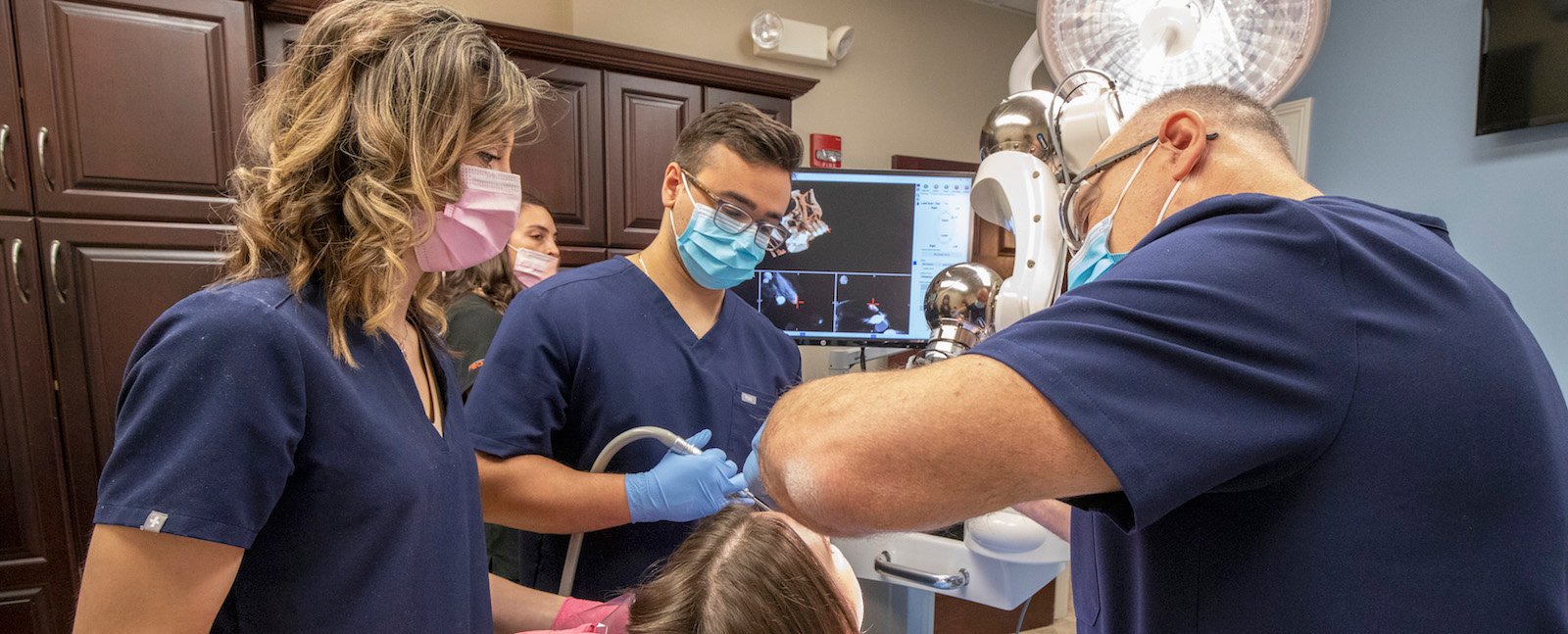Your bones aren't the solid white chunks that you may think they are. They're composed of cells, like everything else in your body. In their case, they're composed of bone cells, which work to repair and rebuild bone after it's been lost. The adaptability that bone cells provide is why braces can reposition your teeth when you're young.
Should you suffer from periodontal disease and lose a lot of bone, your cells may not be enough to rebuild it. That's when you may need to undergo bone grafting to replace or regenerate the lost bone.

How Does Bone Grafting Work?
Bone grafting is when bone material is taken from a willing human, an animal, or in some cases, other parts of your own body. That material is then transplanted onto or around the area that needs it. Your surgeon will make a precise cut over the affected area so that bone can be transplanted onto it.
The cells in the transplanted bone then join with the cells in your bone, repairing it. Bone grafting will usually leave your repaired bone stronger than it was before.
Grafting material is essentially the glue that will hold your old bone and your new bone together until they can bond.
Uses for Bone Grafting
The surgery has many uses. It can restore bone almost anywhere on the body, so it's useful for many types of procedures. These include:
 Tooth extractions: When a tooth is removed, it leaves nothing but a gaping hole behind.You could deposit grafting material into it in case you'd like to replace the lost tooth later.
Tooth extractions: When a tooth is removed, it leaves nothing but a gaping hole behind.You could deposit grafting material into it in case you'd like to replace the lost tooth later. - Dental implants: You can replace lost teeth by grafting replacements into the holes left behind. You can still regenerate even if you've lost a lot of bone.
- Supporting teeth: If you're going through bone loss, your teeth may lose support and get loose. Should this happen, you can regenerate the bone around them to provide additional support.
What Are the Steps?
The process is simple enough, but getting there is slightly less so. The steps involved are:
- Confirm with your dentist that you need bone grafting surgery.
- Ask if there's anything that you need to do ahead of time, such as take fewer substances.
- Receive anesthesia during the surgery to ensure that you won't feel the precision-cut or the grafting.
- Your surgeon will apply the grafting material between the two pieces of bone.
- They'll also make any additional repairs that are needed.
- Your surgeon will surgically close the cut.
Why Would You Need It?
The procedure is only necessary if you've lost a large amount of bone. A fracture or break can usually be healed by bone cells, but losing a tooth is another story. If you lose too many adult teeth, the bone surrounding them will melt away. Your face will also sag, giving you an unpleasant appearance.
Bone grafting may also be used if you suffer a fracture that concerns your orthodontist. Bone diseases such as osteonecrosis or cancer also cause concern.

When Would You Need It?
Bone grafting becomes necessary when your orthodontist insists that it is. However, there are plenty of ways to find out.
- Certain developmental defects may make bone grafting a necessity, as it'll be your only option for regrowing what was lost.
- Gum disease will usually require it.
- If there's an empty space where your tooth once was, you should consider taking the surgery.
- A significant injury will make it so that the surgery is your best choice of recovery.
Should you ever be in need of bone grafting surgery or want to learn more, please contact North Shore Smile Surgery and make an appointment today.



